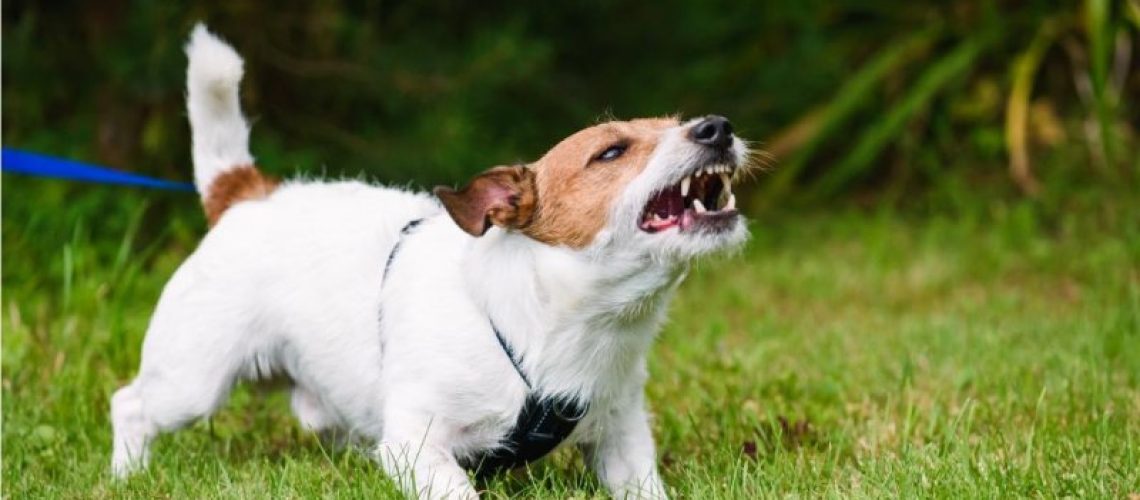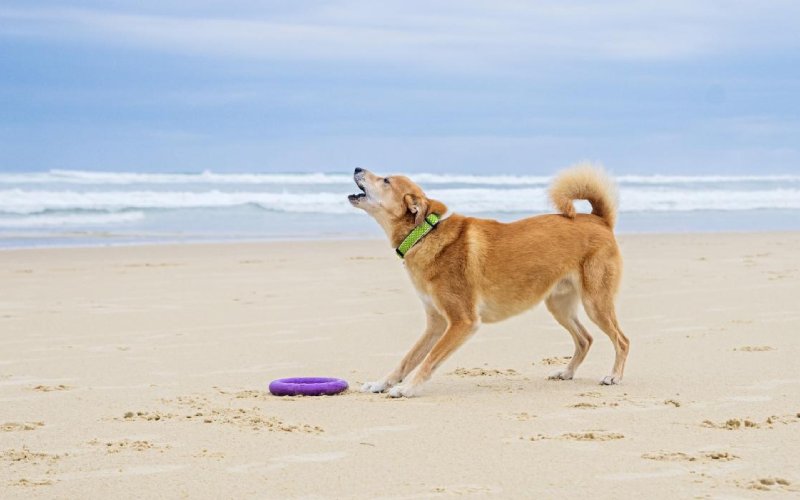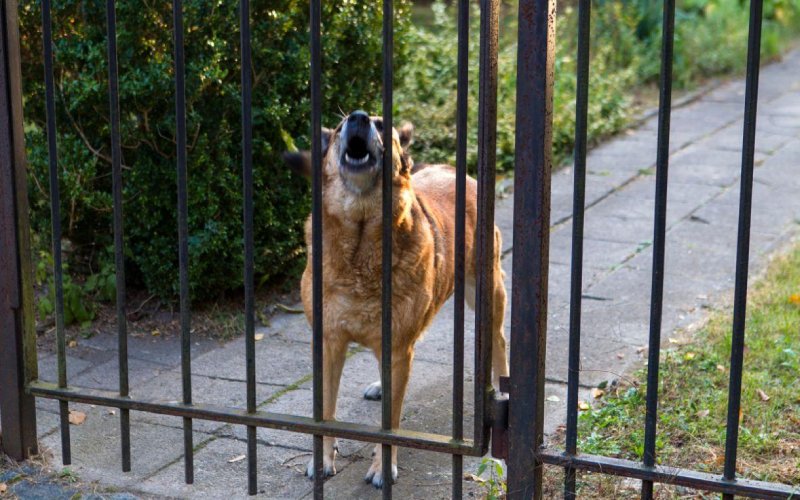Did you know that your furry friend’s sudden urge to chase after squirrels isn’t just a quirky pastime but a glimpse into their ancestral DNA? It’s true—dogs are descendants of wolves, and that primal predatory drive still lurks beneath their domesticated exterior. Yet, when this instinct turns into aggression, it can pose a challenge for even the most dedicated dog lovers.
Keep reading, and let’s explore the dynamic world of dogs and their behavioral intricacies together.
What is Dog Aggression?
Dog aggression is when dogs show behaviors that are unfriendly or mean, which might be growling as a warning or going as far as biting. It’s really important to remember that being aggressive doesn’t necessarily mean a dog is bad. More often, it’s their way of responding to certain things happening around them or where they are.
Signs of Aggression and What Might Cause Them:
| Signs of Aggression | Potential Triggers |
| Growling | Threat, Fear |
| Snapping | Possession, Territory |
| Biting | Pain, Fear |
| Lunging | Defensive Behavior |
Different kinds of Dog Aggression
-
Fear Aggression
Dogs feel fear just like we do, and sometimes, that fear shows up as aggression. If a dog is scared or feels trapped, it might react by getting snappy or biting, thinking it needs to defend itself. Watching out for signs of fear in your dog is crucial—they might crouch down, tuck their tail, or their eyes might go wide. Things that can make a dog scared include sudden moves, loud sounds, or being somewhere new and strange.
-
Territorial Aggression
Dogs naturally have a strong sense of ownership over their space. They may bark or even go after someone they see as an invader to keep their turf safe. This sort of thing can happen anywhere, not just outside, but also inside your home, like with new people coming over. It’s pretty important to tell the difference between protective territorial behavior and unwarranted aggression. Usually, this territorial behavior starts showing up when dogs get to be adults, from around one to three years old.
Signs of Territorial Aggression:
- Excessive barking at strangers
- Growling when someone approaches their space
- Lunging or biting if their territory is breached
-
Protective Aggression
Out there in nature, dogs stick together in groups, and they’ve got each other’s backs. If one is in trouble, the rest jump in. Domestic dogs haven’t forgotten this, and sometimes they might get aggressive if they think their human family or dog pals are in danger. It’s super important to understand and handle this protective side, especially as dogs grow out of their puppy days and become full-grown.
-
Possessive Aggression
Dogs sometimes act like they have to guard their toys or food closely, and that’s because of an old instinct to protect what they think is valuable. It’s super important to recognize and deal with this kind of possessive aggression. It can happen in any male or female dog, no matter how old they are. They’re just following their deep-down urge to keep their valuables safe.
Items Dogs Guard & Solutions:
| Item | Solution |
| Food | Feed in quiet spots; use treats to reduce guarding. |
| Toys | Rotate toys; remove ones causing aggression. |
| Resting Spots | Designate areas; train them to “stay” on command. |
-
Defensive Aggression
When a dog feels threatened, defensive aggression can kick in. This is a bit like fear aggression, but the difference is that these dogs won’t back down. They might even go on the offense, moving toward whatever they think is a threat. Knowing the signs and triggers of defensive aggression is crucial to get on top of it and keep it under control.
-
Social Aggression
Dogs come with their own social ladder, and sometimes aggression is how they navigate their place within the pack. If they think their spot in the group is at risk, it can make them act out. It’s super important to make sure they feel safe and certain about their place with their friends. Getting how they think about their hierarchical nature can help make sense of these actions.
| Signs of Social Aggression | Potential Interventions |
| Growling when approached | Training & positive reinforcement |
| Guarding food or toys | Introduce items slowly & under supervision |
| Asserting dominance over other pets | Monitor interactions & separate if needed |
-
Frustration-Elicited Aggression
Imagine how it feels to be kept away from something you really want. That’s how a dog can feel when held back or if they can’t get to something they’re after — this can make them frustrated, and sometimes that frustration turns into aggression. It’s key to spot and take care of these triggers to keep your dog peaceful and happy.
Tips to Prevent Frustration-Elicited Aggression:
- Provide regular exercise & playtime.
- Train using positive reinforcement techniques.
- Avoid teasing or withholding toys/food without reason.
- Ensure they have their own space.
-
Redirected Aggression
Sometimes a dog might switch its aggression to a different target. If a dog gets riled up by someone or something but can’t get to it, it might take out its frustration on someone else. Imagine two dogs barking at one another across a fence. If they can’t actually reach each other, one dog may end up snapping at a person nearby instead. In these moments, it’s key to stay calm and make sure you’re safe first.
-
Pain-Elicited Aggression
Pain or discomfort can trigger a defensive, aggressive response in dogs. If you come across a dog that’s injured or distressed, you need to be extra careful and read their body language right to keep everyone safe.
- Sex-Related Aggression
During mating times, dogs can become more aggressive as they try to claim their territory. This type of aggression is usually connected to mating behaviors and is more common in dogs that are not neutered or spayed.
| Differences in Sex-Related Aggression | Male Dogs | Female Dogs |
| Frequency | More Common | Less Common |
| Intensity | Often Higher | Milder |
| Triggers | Mating, Rival Males | Mating, Protecting Offspring |
-
Predatory Aggression
Sometimes dogs show their hunting side by doing things like chasing or grabbing, especially when there’s something fast-moving or making noise. It’s really important to get a handle on these behaviors for everyone’s safety, through training, staying alert, and maybe getting some help from the professionals.
Tips for Managing Aggressive Behaviours
Be careful and patient when you’re around dogs you don’t know, to keep things safe for you and the dog. Feeling worried about how your dog acts aggressively is pretty common.
- Training: Implementing early training to curb predatory instincts.
- Safe Play: Ensuring playtime does not encourage chasing or grabbing.
- Awareness: Maintaining vigilance, especially around vulnerable targets.
- Professional Help: Seeking expert advice when predatory behaviors become concerning.
Conclusion
Dealing with a dog’s aggression means being understanding, patient, and ready to step up. Knowing what sets off aggression is step one in making a safe and friendly space for you and your dog. Always lead with empathy when you’re working through aggression issues. Building a strong, clear connection with your dog is the way to a well-balanced and joyful life together.
We can help you with aggression with your dog. Call us at:
561-513-5333




